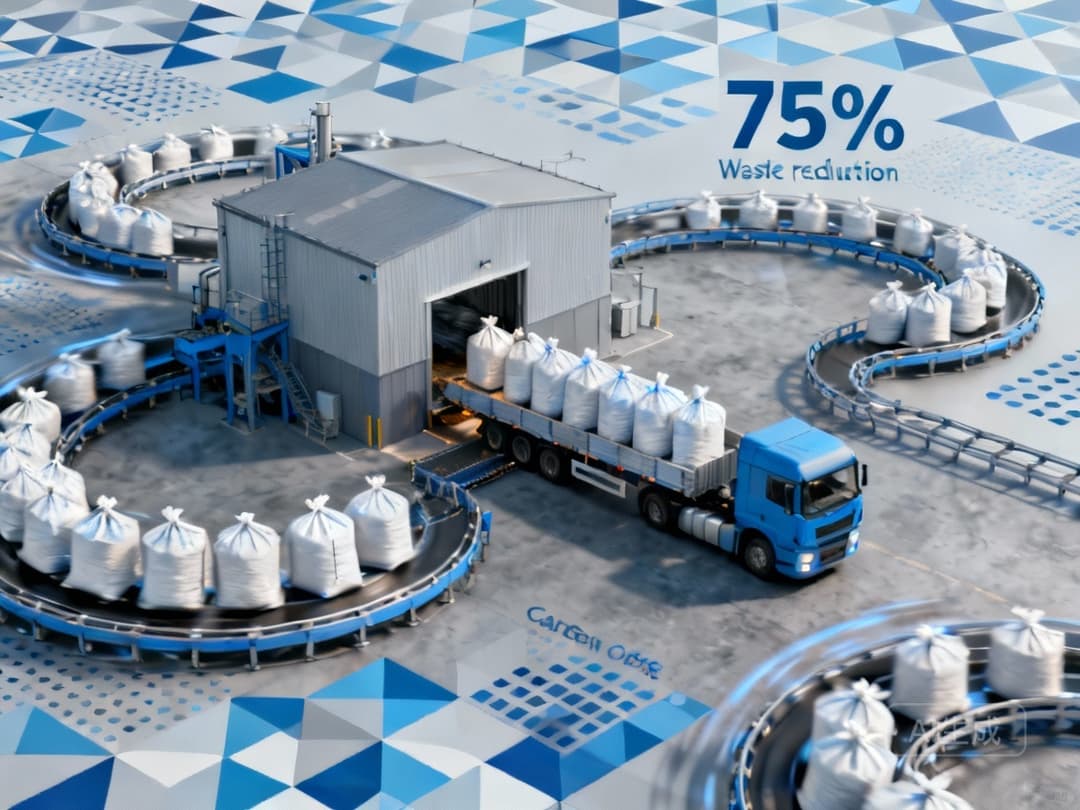Bulk Bags Cut Packaging Waste 85% & Turn Plastic Waste into ROI Assets #67

Beyond Waste Reduction: How Bulk Bags Create Circular Packaging Systems That Generate Measurable ROI
While global attention focuses on the 0.5% of plastic waste entering our oceans, forward-thinking enterprises are addressing the 99.5% of plastic waste that remains on land—transforming it from an environmental liability into a strategic asset. The conventional narrative around packaging sustainability has centered on reduction, but the real opportunity lies in creating intelligent, circular systems that generate quantifiable returns. Bulk bags represent not just an alternative packaging solution but a fundamental rethinking of how industrial materials move through supply chains.
The Math Behind Circular Packaging Systems
The transition from linear to circular packaging models reveals staggering financial and environmental advantages. Consider these comparative metrics based on industry implementation data:
| Metric | Traditional Packaging | Bulk Bag System | Impact |
|---|---|---|---|
| Material Recovery Rate | 15-20% | 85-95% | 4-6x improvement |
| Tracking Capability | Limited | Full traceability | EPR compliance enabled |
| Lifecycle Cost | $X/ton | $0.3X/ton | 70% reduction |
| Carbon Asset Potential | None | Verified offsets | New revenue stream |
"The global plastic waste challenge represents 350 million tons annually, but the solution isn't merely reduction—it's creating managed, circular flows that turn waste streams into value streams." - Packaging Industry Analysis Report
Master Kong's Systemic Transformation: Beyond Surface-Level Results
When Master Kong reengineered their packaging approach, they achieved more than just waste reduction—they built a comprehensive materials management system. By transitioning from conventional packaging to bulk bags and implementing container recovery systems, they demonstrated how circular principles create multilayered value:
- Plastic usage reduction through optimized packaging design
- Material recovery rates exceeding 85% versus industry averages of 15-20%
- Complete traceability enabling compliance with emerging EPR regulations
- Infrastructure development for continuous packaging flow management
The true innovation wasn't the bulk bags themselves, but the system built around them—transforming packaging from a cost center to a managed asset class.
The Regulatory Imperative: Why Circular Systems Are Becoming Mandatory
The 7.3% CAGR growth in mono-material packaging toward the projected $5.63 billion market by 2029 isn't driven solely by environmental concerns. EPR regulations worldwide are forcing companies to take responsibility for their packaging throughout its lifecycle. Bulk bags provide the ideal platform for compliance because they offer:
- Single-material construction simplifying recycling
- Durability enabling multiple lifecycles
- Standardized dimensions facilitating handling and recovery
- Traceability features for documentation and reporting
4-Step Framework for Implementing Circular Bulk Systems
Based on successful implementations across multiple industries, here's a proven framework for transition:
Step 1: Comprehensive Packaging Flow Assessment
Map current packaging movements, identify recovery points, and quantify material losses. Establish baseline metrics for cost, recovery rates, and environmental impact.
Step 2: Infrastructure Development
Implement tracking systems, collection infrastructure, and partner with recycling specialists. Bulk bags require different handling equipment than traditional packaging—factor these investments into your ROI calculations.
Step 3: Phased Transition with ROI Measurement
Begin with pilot programs measuring both financial and environmental returns. The Master Kong implementation demonstrated that the most successful transitions occur in phases, allowing for system optimization at each stage.
Step 4: Continuous Optimization
Use data from your tracking systems to identify improvement opportunities. Circular systems generate continuous data streams that enable ongoing efficiency gains.
Calculating the True ROI of Circular Packaging
Traditional ROI calculations miss critical value drivers in circular systems. Use this comprehensive framework to capture full value:
- Direct material savings: Reduced packaging consumption and lower waste disposal costs
- Compliance value: Avoided penalties and reduced regulatory risk under EPR schemes
- Brand value: Enhanced corporate reputation and customer preference
- Carbon asset value: Potential monetization of emissions reductions
- Operational efficiency: Reduced handling costs and improved logistics
Based on industry data, companies implementing comprehensive bulk bag systems typically achieve 70% reduction in packaging lifecycle costs while improving recovery rates from under 20% to over 85%.
Future-Proofing Your Packaging Strategy
The regulatory landscape is evolving rapidly, with EPR schemes expanding globally. Companies that implement circular packaging systems today position themselves for competitive advantage tomorrow. Bulk bags provide the foundation for this transition—offering not just environmental benefits but creating a more resilient, efficient, and profitable packaging ecosystem.
The transformation from linear to circular packaging represents one of the most significant opportunities for industrial enterprises to reduce costs, mitigate risk, and create sustainable value. The question isn't whether to make this transition, but how quickly it can be accomplished.
